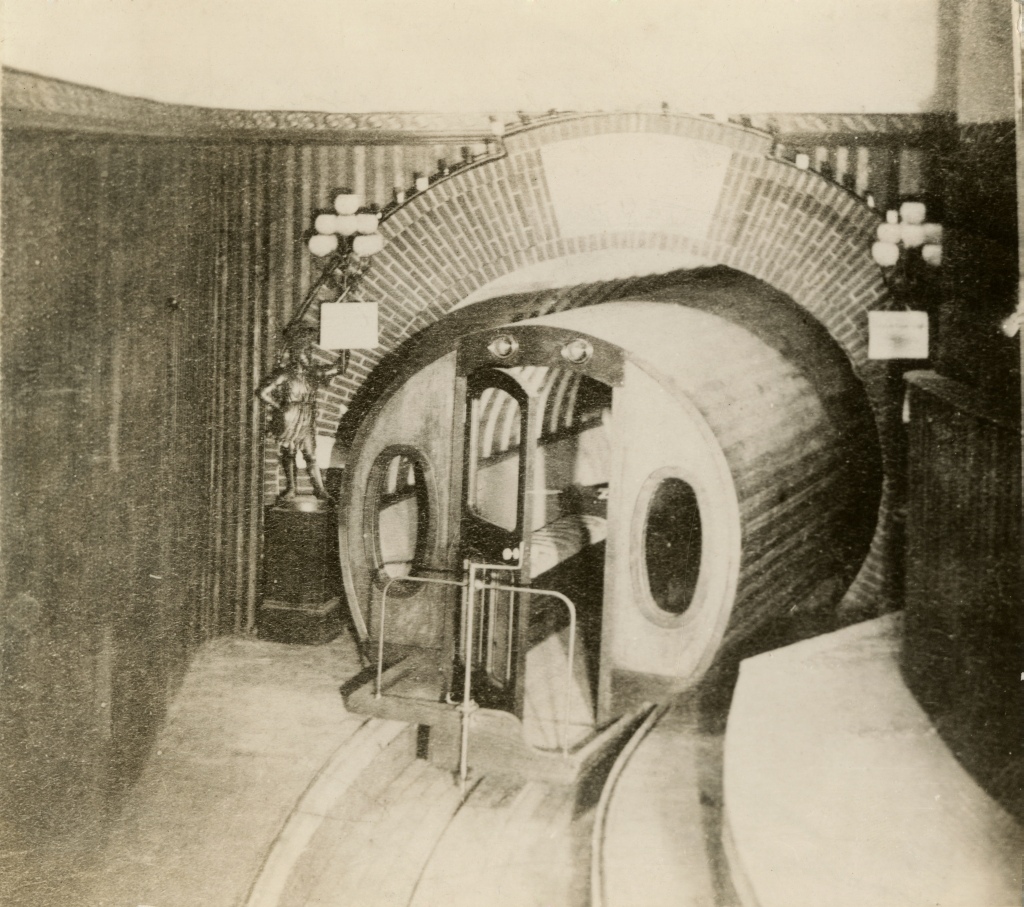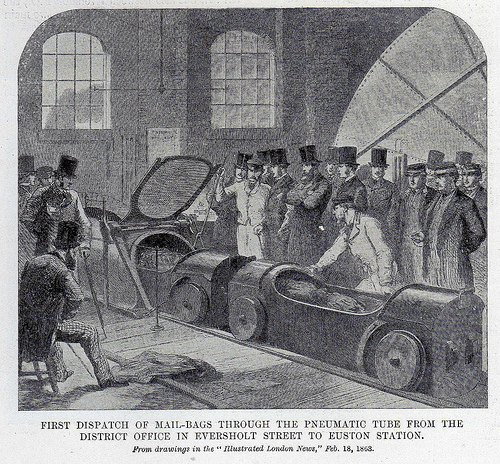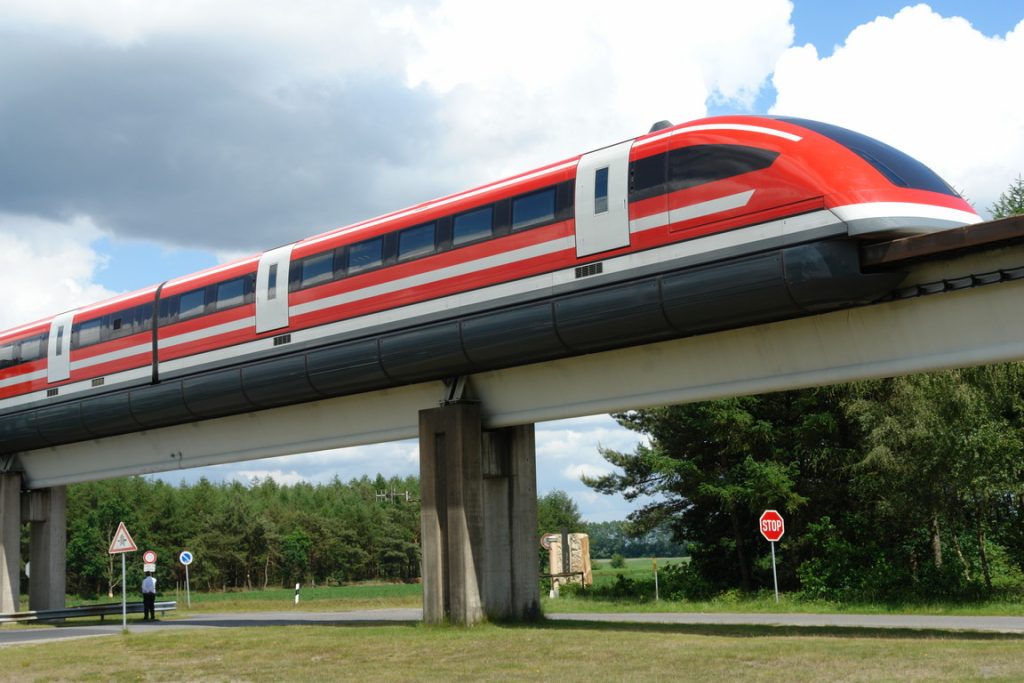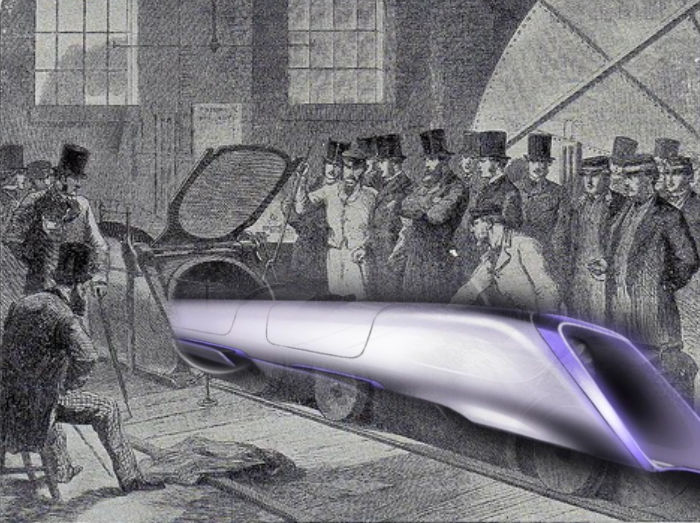When you think of modern concepts for transportation, you are probably thinking of the Hyperloop. It promises to connect the centers of major cities much faster than air travel. The idea is to run magnetic levitation trains in a vacuum inside a tube. Many people find this idea fascinating because it sounds like science fiction come true. But is the idea really that new? In this article, I will show you some historical projects that predate the idea of the Hyperloop by more than a hundred years.
Introduction
In 2012, Elon Musk proposed the concept of the Hyperloop. He envisions a transportation system in which magnetic levitation trains travel inside a depressurized tube. The low air pressure in the tube means that air friction is greatly reduced. This would allow the trains to travel very fast, even faster than the speed of sound. A proposed route from San Francisco to Los Angeles would cut travel times to 30 minutes, as anticipated by Tesla engineers.

Elon Musk unveiled his concept and, in a grand gesture, offered the concept as open source so that a community of engineers and companies could develop the idea. But is this really a new idea? As I will show in this article, vacuum trains and maglev trains have been around for the last two hundred years. What can we learn from this rich history of trial and error?
Beach Pneumatic Transit
In 1870, Alfred Ely Beach opened the Beach Pneumatic Transit. This was a very short subway that ran under Broadway in New York. It used air pressure to push a capsule through the tunnel, so it required a sealed tunnel, just like the Hyperloop concept.

In the 19th century, similar projects were pursued in England with the Chrystal Palace Pneumatic Railway.
All these projects received some publicity in the beginning, but for various reasons none of them went beyond the stage of demonstration installations. Contemporaries were also skeptical about the risk of a windowless capsule traveling in a vacuum – a doubt that many people still have about the Hyperloop system.
The fate of the Beach Pneumatic Transit demo line was to be completely forgotten after a few years. It was only 40 years later that the tunnel was rediscovered during the construction of the New York subway.
London Pneumatic Despatch
Another development of the 19th century was the London Pneumatic Despatch Company. They built an underground railway system in London. Capsules running in the tunnels connected several post offices and railway stations in London.

After a few years of trials, the Post Office abandoned the systems. The promised time savings did not materialize, and the cars kept getting stuck in the tunnels. This led to the eventual failure of the London Pneumatic Despatch Company.
Transrapid
The other integral part of the Hyperloop system, magnetic levitation, is also a rather old idea. In Germany, we have a lot of experience with these “maglev” trains. Development of this system began in the late 1960s by the companies Siemens and Thyssen Krupp. In the following decades they perfected their “Transrapid“. It reached a top speed of more than 400 km/h and proved that the system is both fast and energy efficient.

Several lines within Germany had been proposed. Some lines would have connected major cities, others would have connected airports with city centers. Despite a lot of political support, even from the German parliament, none of these lines were realized. One of the main problems was that a magnetic levitation system is not compatible with the existing transportation system. It cannot replace normal rail lines, which also serve regional and freight traffic. Adding another mode of transportation that requires its own right of way would consume more land and provide limited benefits.
Another problem was that while the Transrapid was being developed, the speed of conventional railways was also increasing. Modern trains like the ICE3 can travel at more than 300 km/h, not far from the maximum speed of the Transrapid.
For example, it has been calculated that the time saved on the planned maglev line between Hamburg and Berlin would be 20 minutes. This small saving has to be compared with the projected ticket prices for the Transrapid, which were about twice as high as for the ICE. It was doubted that enough passengers would be willing to pay this premium for the small time savings, and this ultimately killed the project.
To date, the only Transrapid line in operation is in China, where it connects the Shanghai airport with the city center. Although China now has the technology to build its own maglev trains, no other project has been built to date. So it seems doubtful that it will see wider adoption in China, especially since China already has a very well developed high-speed rail system.
Conclusion
The idea of the Hyperloop has fascinated many people, myself included. It sounds like the next step we need to take in transportation systems.
However, the ideas combined in the Hyperloop concept are not new at all, they have been around for almost 200 years. Many projects have been tried and failed. They have been hyped and then forgotten. Because the Hyperloop recycles many of these old concepts, we can learn from the failures of its predecessors.
Trains running in a vacuum tube present all kinds of technological challenges. Of course, our technology is much more advanced than it was in the 19th century. But the challenges are still enormous. And will people be willing to travel in a sealed, windowless capsule in a vacuum? Experts in the 19th century were skeptical, and that has not changed much to this day.
There is another important lesson to be learned from the history of the Transrapid. Even if all the technological challenges are solved, will a Hyperloop system be economically viable? The cost of construction and operation will be much higher than for a maglev train because you have to build and maintain sealed tunnels. Also, the minimum curve radii will be much larger at the intended speeds, meaning much more earthwork and tunnels will be required. To make it economically viable, passengers will have to pay much more for tickets. Will the savings in travel time be great enough for passengers to be willing to pay that much? Will the public be willing to give up more land to build another mode of transportation? And how will competing modes of transportation develop in the meantime?
I think these economic and political questions will determine whether we will see widespread adoption of the Hyperloop system, or whether we will look back in a few years and say it was just another gadgetbahn.

5 replies on “The Hyperloop in a Historical Perspective”
[…] that I like to draw lessons from the history of long forgotten transportation systems, like in this article. The CargoCap system reminds me of the only large-scale underground transportation system ever […]
[…] network of railways running at very high speeds. Similar to the idea of the Hyperloop (see my article), the hypersonic railway will run in tunnels in which a vacuum is maintained. The trains will use […]
[…] center of Munich you could have a look into a possible future of transportation (or another Gadgetbahn?). The team from the Technical University of Munich (link) presented their Hyperloop capsule, which […]
[…] get them out? How do you repair the pipes afterwards? This is a problem that brought down the London Pneumatic Despatch Company more than 170 years ago, and I do not see any new solutions in the concept of […]
[…] speeds. Think of the idea of the Hyperloop (which has many predecessors, as I have written here). It is supposed to reach 1200 km/h or more. This idea is also presented in the exhibition, […]